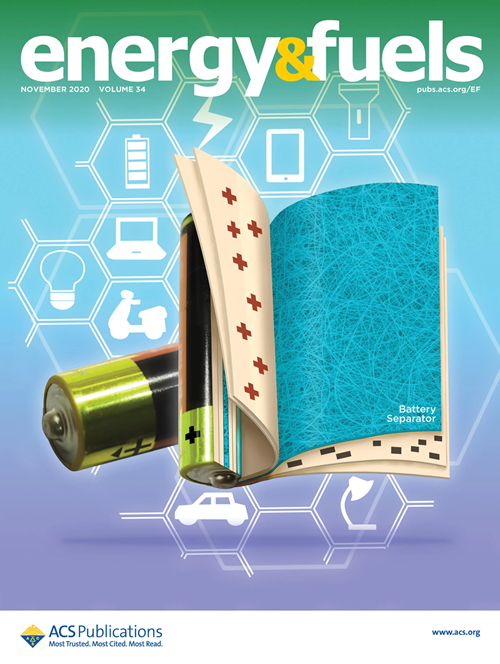热化学生物质转化 CFD-DEM 模拟中不同分辨率下粒子-流体耦合的视角
IF 5.3
3区 工程技术
Q2 ENERGY & FUELS
引用次数: 0
摘要
在使用离散元素法(DEM)对热化学生物质转化进行计算流体动力学(CFD)模拟时,需要为流体与颗粒以及颗粒与流体之间的信息交换建立适当的耦合方案。同时,在整个反应器中,对流体场分辨率的要求通常各不相同,颗粒流动状态也会从稀到稠不等。对于这种情况,目前文献中对建立上述耦合的适当长度尺度以及两个方向的耦合是否可以独立选择的问题缺乏共识。在当前的工作中,我们回顾了 CFD-DEM 模拟中耦合的最新文献,尤其关注半解方法。我们讨论了现有的不同耦合方法,并确定了处理热化学转换过程的要求。最后,我们为这些过程的模拟制定了一些一般准则,同时指出不可能同时执行对称耦合、未扰动流体状态采样(有时相关性要求)以及粒子对流体场的局部影响。建议未来的模型开发应侧重于重新引入颗粒流的局部微观结构变化的影响,当使用过长的耦合长度来稳定数值求解程序时,颗粒流的局部微观结构变化会被过滤掉。数据驱动方法与高空间和时间分辨率的非侵入式实验相结合,被认为是实现这些雄心壮志的可行途径。本文章由计算机程序翻译,如有差异,请以英文原文为准。

Perspectives on Particle–Fluid Coupling at Varying Resolution in CFD-DEM Simulations of Thermochemical Biomass Conversion
In computational fluid dynamics (CFD) simulations of thermochemical biomass conversion using the discrete element method (DEM), the need to establish adequate coupling schemes for the fluid-to-particle and particle-to-fluid information exchange arises. Simultaneously, the requirements on the resolution of the fluid fields typically vary throughout the reactor, and the particulate flow regimes can vary from dilute to dense. For such conditions, there is currently a lack of consensus in the literature about the appropriate length scale to establish the aforementioned coupling and on the issue of whether the coupling in the two directions can be chosen independently or not. In the current work, we review the recent literature on coupling in CFD-DEM simulations, with a particular focus on semiresolved approaches. We discuss the different coupling methods available and identify requirements arising from dealing with thermochemical conversion processes. Finally, we establish some general guidelines for the simulation of these processes, while noting that it is impossible to simultaneously enforce symmetric couplings, sampling of the undisturbed fluid state (as sometimes required by correlations), and localized influence of the particle on the fluid fields. It is suggested that future model development shall focus on reintroducing the effects of varying local microstructure of the particulate flow that is filtered out in the particle–fluid coupling whenever excessive coupling lengths are used to stabilize the numerical solution procedure. Data-driven approaches, in combination with nonintrusive experimentation at high spatial and temporal resolution, are identified as a promising route to realize these ambitions.
求助全文
通过发布文献求助,成功后即可免费获取论文全文。
去求助
来源期刊

Energy & Fuels
工程技术-工程:化工
CiteScore
9.20
自引率
13.20%
发文量
1101
审稿时长
2.1 months
期刊介绍:
Energy & Fuels publishes reports of research in the technical area defined by the intersection of the disciplines of chemistry and chemical engineering and the application domain of non-nuclear energy and fuels. This includes research directed at the formation of, exploration for, and production of fossil fuels and biomass; the properties and structure or molecular composition of both raw fuels and refined products; the chemistry involved in the processing and utilization of fuels; fuel cells and their applications; and the analytical and instrumental techniques used in investigations of the foregoing areas.
 求助内容:
求助内容: 应助结果提醒方式:
应助结果提醒方式:


